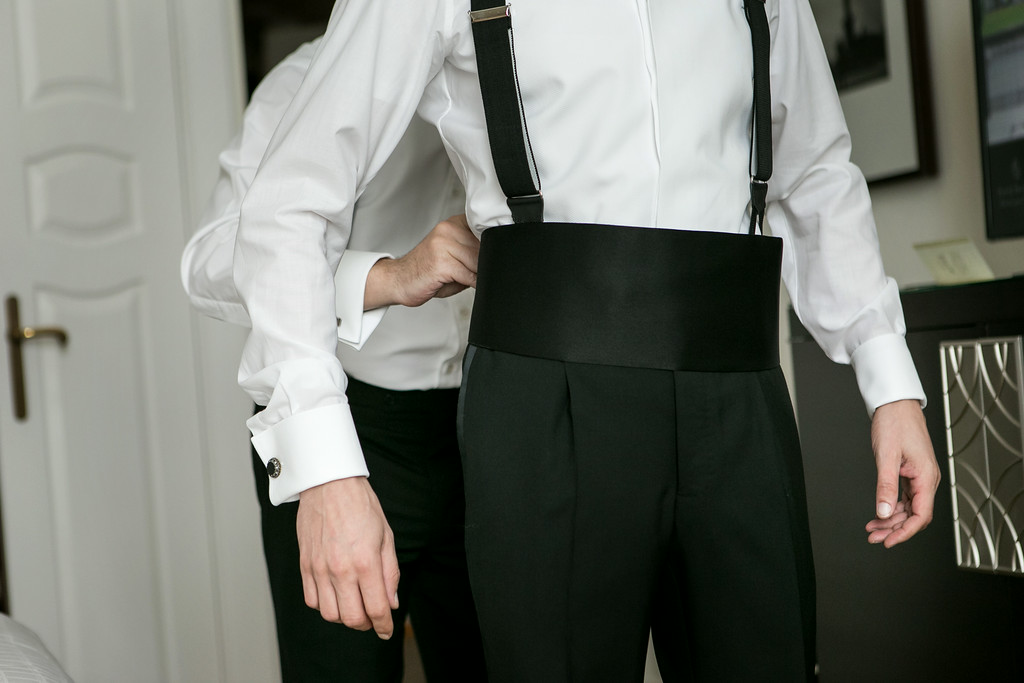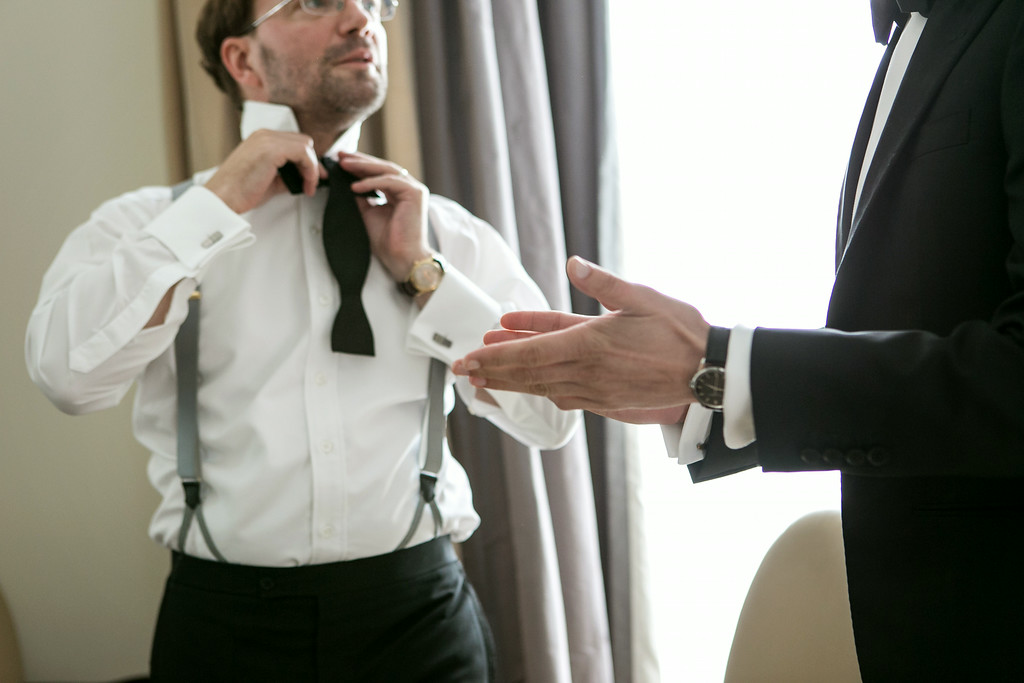Ball season is upon us again. While for the ladies this is the best opportunity to sparkle, the gentlemen need to take a more informed approach to dressing.
From its early beginnings black tie attire has always been a style minefield. Henry Poole’s first incarnation of the dinner jacket for, the Prince of Wales later Edward VII, is considered the original version of the dinner suit. Unaltered, the same style would still be perfectly acceptable today. Different versions of eveningwear were developed during the 1930s and ‘40s, which serves as inspiration for the various takes on the classic black tie popular nowadays.
However, whether it is Henry Poole, Versace or Tom Ford, all successful evening looks work within a certain set of rules. Traditionally evening wear was made out of heavyweight wool barathea, this specific structure allows a very matte surface creating a pleasing contrast with the silk on the lapels. Nowadays the preference is for lighter weight fabrics, for comfort and, at the same time, resistant to creasing. High twist wools or wool/mohair blends offer a great weight/crease ratio. Dinner jackets should always have silk faced lapels, either in satin for a more graphic look, or with ribbed facings for a more subtle combination.
Given the low-key nature of fabrics the drama needs to come from the silhouette and the styling details. So, a little bit more shape and a closer fit, think Fred Astaire. Single (rigorously one button) or double breasted. The style of lapels should be either peak or shawl, as they both accentuate the low opening of the front. While officially dinner jackets should not have vents in the back, often, for practicality, two side vents are incorporated.
To avoid exposing too much shirt when sitting down, a waistcoat in a matching fabric can be a nice alternative to the more popular cummerbund. Both of these allow you to maintain an impeccable look throughout the evening. Trousers need to be higher waisted than regular, to finish well under the waistcoat or cummerbund. They should be worn with braces, can feature side adjusters, but never a belt. Similarly never ask for turn ups, evening trousers should always have a plain hem. While slim trousers are en vogue these days, tight is not a good look for men. They should fit, but never constrict. The trousers need to have a decorative tape on the sides, which should be chosen to compliment the silk facings on the lapels.
The evening shirt for black tie attire should always have a turn down collar - the wing collar is for white tie. The front part (the bib) should be pleated or in Marcella (better known as pique, which is characterized by geometrical patterns in the weave). With pleats, be careful to not to revisit the Seventies ruffled look, but tight, neat pleats look great. Either a hidden button front, where a placket covers the buttons or a normal placket for studs. And of course, it's always a double-cuff. It's worn best with some simple elegant cufflinks - silver, black or white."
Learn to tie a bow tie
It’s not that complicated, there are many good videos on the internet to help. Practice before the event; first attempts usually don’t get the best results. The knot will never be „perfect” like on a pre tied one, but it will carry a dash of character and charm. Alternatively a normal tie in faille or rips can also look smart, referencing slightly the 60’s.
The traditional accompaniment to a dinner suit is patent leather oxford shoes. A highly polished pair of simple black oxfords will also do. Wear plain black socks in silk or fine cotton.
Where you can show some personal flare is with accessories. Gentlemen can opt for a pocket square with evening wear, in cotton, linen or silk, plain white is my preference. A simple dress watch can be a nice accessory too. Classic and not too big, preferably on a black leather strap. Even a family pocket watch, especially if you are wearing a waistcoat, can be charming. Cufflinks can also be decorative but best to keep to the same colour as your watch.
Generally, one would like to avoid standing out too much. However, there are a number of options to differentiate oneself from the crowd. A double breasted dinner suit can be a good idea, just make sure to always wear the jacket buttoned up. The practical reasons of wearing a waistcoat were already mentioned other than it just looks damn stylish. Consider midnight blue as an alternative to black. Under artificial light black can look a bit dull, sometimes a very dark blue serves better to catch the attention of you companions. One of the biggest trends in menswear lately, the midnight blue dinner suit is not the easiest to get right. For a chic, sophisticated look, we recommend to match, not contrast the color of the silk facings with the fabric of the suit. So rather blue on blue, than black on blue. The latter can veer on costume territory. If the dress code says ’black tie optional’ it means that most guests will opt for black tie, but a dark (preferably black) suit is also acceptable.
For more seasoned dressers, these types of events serve as the best opportunities to branch out with more interesting combinations like velvet dinner jackets with matching velvet slippers. But never a full velvet suit, please. And while a white dinner jacket is great on a yacht do be careful not to get mistaken for the Maître d’ if going to an hotel or a restaurant.
Have fun!







